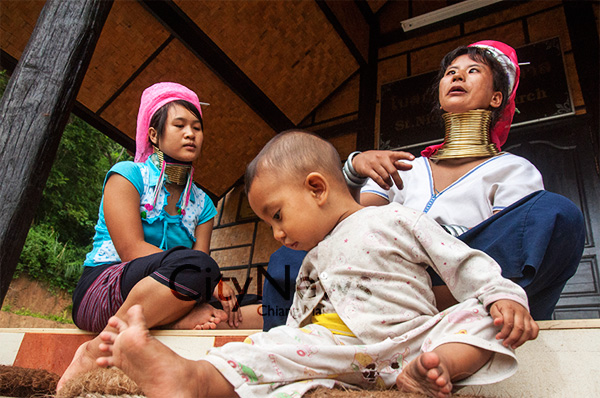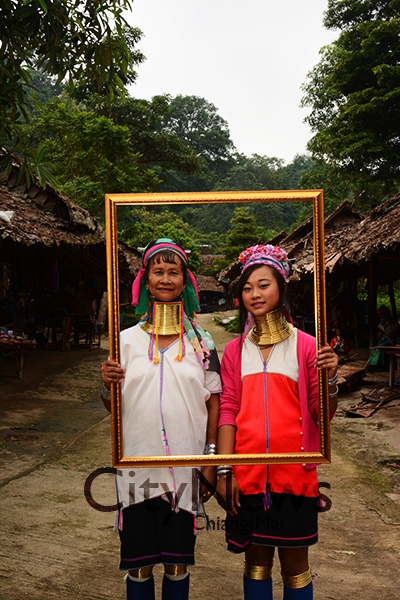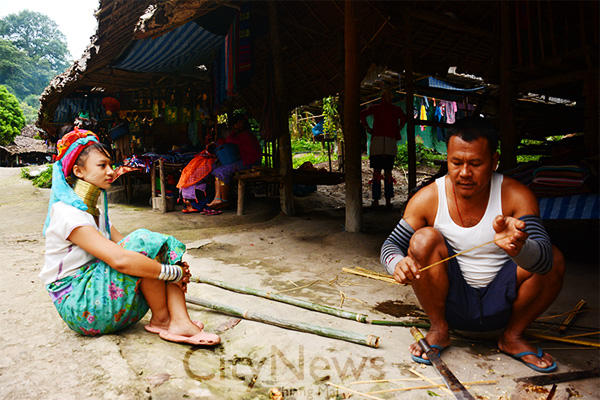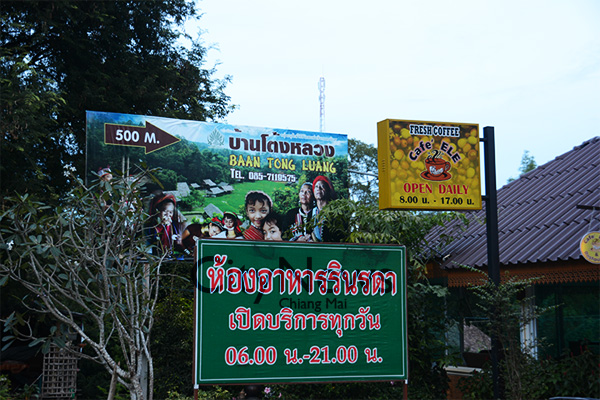
The “Long Neck” Kayan are a widely misunderstood ethnic group from Burma. Writer/director Aung Ko Latt from Burma and screenwriter Hector Carosso from New York City have teamed up to produce a fictional story about the Kayan to the big screen for the first time ever, released just weeks ago in Rangoon.
Kayan Beauties tells the story of four Kayan girls who travel from their small village in Burma to the relatively big city of Taunggyi. There, the unthinkable happens when one of the girls is kidnapped by human traffickers.
In the months I spent researching my in-depth story on the Kayan for Citylife, I was able to receive an advance screener of Kayan Beauties, followed by an email interview with Hector and Aung. Here is what they had to say about their landmark film.
Citylife: I read that your main goal in making the film was to show the world both that the Kayan are originally from Burma, and that the Burmese film industry is capable of making world-class films. Were there any other smaller, more specific goals you had in mind while making the film? Any unintended consequences or lessons?
A third large goal was that we wanted to take advantage of the opportunity to raise awareness about the issue of human trafficking that is a major problem not only in Southeast Asia, but throughout the entire world. Also, as Myanmar opens up more and more to the world, it could become a bigger target for traffickers. Raising this awareness was important for us.
Lessons include becoming more efficient in handling large production and logistical matters for such a feature film in Myanmar. This was the first Myanmar produced film that used such technology and went through the entire post-production process for quality sound and image, so we faced a number of challenges.
Other challenges involved censorship issues that we faced throughout the writing and production process. Today, Myanmar has lifted most censorship restrictions, so it’s no longer a major issue. The other challenge is bringing international attention to the film.

Citylife: What has the public response been like since the film’s release in Burma?
Kayan Beauties is not a comedy, action or family drama that usually draw Myanmar audiences. So we didn’t and don’t expect it to be a blockbuster. We weren’t fully certain what the response would be, but we found the public and the media response to be very positive and supportive. Especially, from the Kayan community that appreciated how the film brings attention to them as a community.
Citylife: I am curious about your own backgrounds, Hector Carosso and Aung Ko Latt – what inspired each of you to make this film? How did you get involved in this story?
We’ve known each other for close to twenty five years, after having training in martial arts together in Tokyo. Also, Aung came to New York to take intensive filmmaking courses with me at the New York Film Academy, so we know each other’s interests. Aung has been going to the Kayan region of Myanmar since the early eighties to play and teach music there. He developed a strong connection to the area and to the people. He also became very good friends with Catholic Bishop Matthias Shwe, who is now the Archbishop of the entire region. Bishop Matthias has been a strong advocate of the people, and has often offered refuge to the Kayan and other groups in the area. Through conversations with Bishop Matthias, Aung had the spark of the idea for the film.
Aung and I discussed the story during one of my trips to Myanmar, and then we developed it further by phone (before skype, and when calls to Myanmar were very expensive) and email over a year. I wrote the script based on our conversations, and research that I did on some trips to the area before filming. Also, because I didn’t have all the details of Kayan life accessible to me in New York, I left some “holes” in the script for filling out when we were on location during filming…

Citylife: The part in the film where the girls are incensed at the thought of being called “Padaung” – I found this very interesting since I’ve heard so-called “experts” refer to them as both Kayan and Padaung. Can you shed some light? If Padaung is the wrong term, when and where did the mix-up come about and why does it seem so persistent?
To the Kayan, the term Padaung is considered derogatory. You’re correct though that it’s used widely, by “experts” outside of Myanmar, and even by many people (who are not Kayan) inside Myanmar. I’ve seen many international articles written about the Kayan that refer to them as Padaung. I (Hector) remember being told that the term originated inside the country by non-Kayan as a way to describe the Kayan. Its persistence comes from its wide usage over the years, and because of the inability of the relatively small Kayan population to persuade others not to use it.
Citylife: I know you said that the storyline of the film might not match the situation in the MHS camps today, and indeed, no one I spoke to in the camps mentioned the trafficking issue – most just said they had walked here to escape violence in Burma. Is the trafficking of Kayan women to camps in Mae Hong Son a thing of the past, or is it still happening? And if it is in the past, why? Have regulations tightened (even though other forms of human trafficking still continue to flourish)?
You are right that most, if not all the Kayan who went to MHS, went there to escape war. In the film, there is reference to two separate matters, both at the beginning and at the end of the film. These were brokers to Thailand, and traffickers to elsewhere.
In the beginning of the film, when the three Kayan women are talking after the festival, they refer to “brokers” who lure Kayan to MHS as a better place to be. It also refers to the daughter of one Kayan woman. This daughter wrote a letter to her mother that she has decided to stay in MHS. So she had a choice to stay. (The Kayan in the three MHS villages are not considered as “refugees” by the Thai government, whereas the many Karen people who left Myanmar and are found in actual refugee camps are.)
The film also brings up “trafficking” by spotlighting the three city girls, who the woman gang member says “can be sent to some rich country like Japan.” Also, when the Kayan girl is taken away, we can assume that she is not going to end up in a MHS village, but rather either kept by the guy or trafficked somewhere…
Citylife: Was it your intention to draw parallels between the human zoos of Thailand and the human trafficking issues that continue throughout Southeast Asia?
No. The connotations of “human trafficking” are of forced capture, bondage and servitude through labor or sexual exploitation. The issue of the “human zoos” at the time that Kayan Beauties was written and filmed, wasn’t as clear-cut in terms of the “forced” aspect.
If we had clear evidence that Kayan women were being kidnapped from Myanmar and forcibly taken to MHS to pose for foreign tourists snapping away with their cameras, then the answer would have been yes. But we did not have such clear evidence.
Yes, Kayan women were (and are) in those MHS villages. Yes, they were being exploited by enterprising locals. But, they benefited to a degree as well through safety from war and through some monetary compensation. How does one even begin to address the moral judgment of weighing exploitation versus benefit here? I’m sure each Kayan woman has her own perspective on this matter…
Our reference to the human trafficking that’s going on in Southeast Asia was specifically via the city girls and the comments in the film by the gang members and traffickers about them.
Citylife: My own observations and interactions with the Kayan have been exclusively on the Thai side of the border (although I know that all of them are originally from Burma) so I haven’t had much exposure to what the situation is like for Kayan still living in Burma. Is the depiction in the film still accurate or have things changed since then? Are Kayan traditional cultural practices still going strong in Burma? Are many still wearing the rings? Are young people simply choosing a more modern existence and deciding not to wear them?
All the Kayan that you saw in the film are actual Kayan women. The four main actresses are Kayan, but are from a larger town, and do not wear the rings. But you see in many of the village scenes, that there are women wearing the very long rings (brass coil). We shot in the village of Pan Pet, where there were many women and girls with neck rings. So yes, they do still wear them. Also, yes, many are deciding not to wear them. But just as the actresses could have the rings put on for the film and taken off afterward, so can other Kayan who don’t want the more permanent long rings.

Citylife: I have heard mixed accounts of the situation for Kayan women wearing rings in Burma. Some have told me they face ethnic persecution. Is this true? Can you explain further?
There are issues facing “minority” groups throughout Myanmar (just as in every country). The Kayan are not the only minority culture in country. Each faces their own challenges with the greater population. You’d need to discuss this more with the Kayan to get a better answer than we could provide. However, we did receive very much gratitude from the Kayan community for raising their profile in the country, and internationally.
Citylife: How do you feel about the “long neck villages” in Mae Hong Son today? Do you believe they are “human zoos” or do you think such a term is offensive to the people who live there? What, in your opinion, is the proper response to these villages? Should they be boycotted? Or is there a better way?
When I (Hector) was doing research in 2007 for the film I came across a number of anecdotal commentaries and articles about the Kayan in MHS. The question was raised a number of times in these about whether tourists visiting and photographing the Kayan women in MHS villages were contributing to the objectification of these women, or whether they were actually helping due to the fact that some of the money that came from tourism ended up in the Kayan’s hands.
In early 2008, some articles came out in New Zealand, Australia and through the BBC about the matter of Kayan in MHS having been offered refugee status in New Zealand and in Finland, but that the Thai government wouldn’t allow them exit visas. The Thai government insisted that the Kayan were not refugees. The UN insisted that they were. In the articles, there were also allegations that local Thai’s in the MHS area had a hand in keeping the Kayan there because they were so lucrative. The articles used the phrase “human zoos.”
Today, are the villages “human zoos?” I (Hector) don’t think that term can or should be used because today it is evident that the Kayan can leave the villages if/when they want. They stay because they question whether returning to their Myanmar villages would be comparatively beneficial or not. But I (Hector) don’t really know how much autonomy the Kayan actually have in the MHS villages today.
In closing, Kayan Beauties is a fiction film, not a documentary. If it were a documentary, we would have certainly made sure to dive into every aspect of the questions you raise above. One reason, among others, that the film is not a documentary is that we could reach a wider audience through a narrative film, since documentaries draw much smaller viewership. Trying to raise awareness about human trafficking, and not having anybody see the film would be disappointing…
For trailer and more, visit www.kayanbeauties.com.